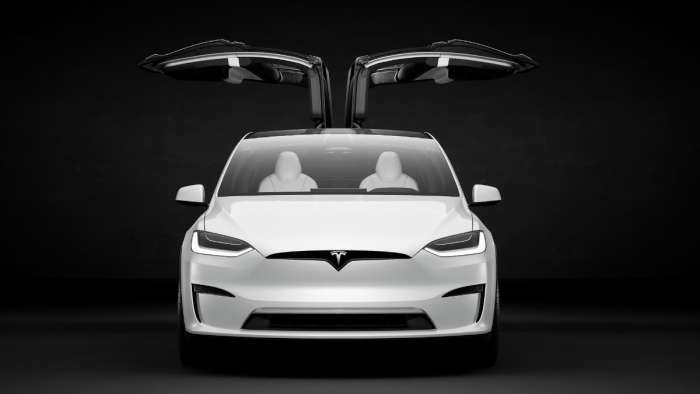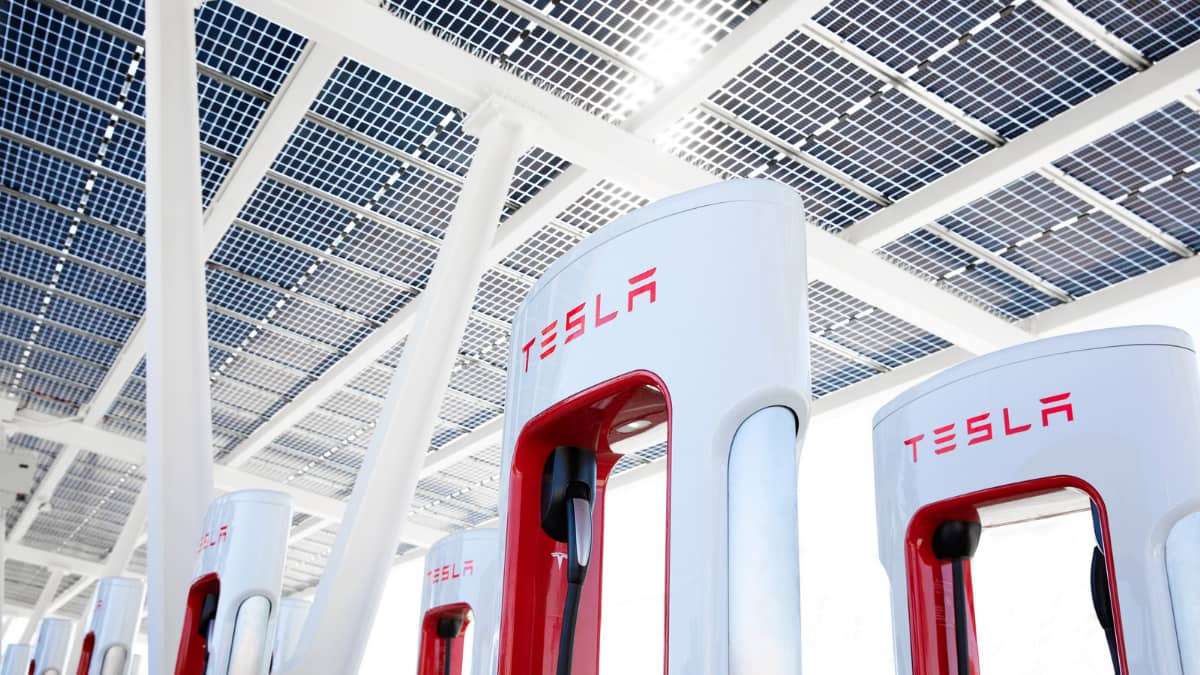Tesla has just started rolling out its latest wireless update, 2022.16.0.2. It basically improves the prediction of energy consumption en-route, including new data related to the weather; it also adds an option to select combined braking and opens the option of multi-accounts in Spotify for each individual user. But in addition, it incorporates relevant information that probably has a lot to do with the opening of Superchargers to electric cars of other brands: now it is possible to know the waiting time at each station for fast charging.
Tesla was the pioneer of OTA (over the air) wireless updates: a function that has been so successful that other manufacturers also try to offer it - with more or less success - in their electric cars. These updates don't just introduce new features or improve the user experience, they can sometimes fix a software bug that in practice actually avoids a visit to the mechanic. The fact that Tesla regularly updates its software systems is nothing new, although in this case the inclusion of new – really cool - options can be perfectly considered relevant.
Waiting times at Superchargers: Tesla has long been offering the occupancy rate of the Superchargers at each of its stations via its car navigator. However, this information is not enough since it was not possible to know, for instance, how long it would take to actually start charging if everyone were busy. Tesla now included this important information, at last.

In each one of the superchargers now you know the recharging power you are getting, the SOC (State of Charge) of the car battery, and the percentage it should reach. With this data it is possible to know how much time each car has left to finish recharging; together with the information of the total number of vehicles that plan to recharge at each station - coming from the routes calculated by their navigators - Tesla has all the data to know approximately how long it would take for a Supercharger to be available. This information is now offered right on the screens of all its electric cars.
This function will be very useful for Tesla owners now that the Supercharger network is open to the rest of the electric cars on the market, and consequently a greater EV influx is logically expected. Thanks to this information, Tesla users will be able to decide if they want to wait the time indicated on the navigator or change their route in order to avoid that waiting time.
Energy consumption calculations: along with the waiting time for recharging, Tesla has implemented some functions that are also very interesting. The first one is a better estimate of the energy consumed by the EVs during a determined route: when a destination is entered on the navigator, the software will consider various weather-related parameters to estimate energy consumption: crosswind, headwind, humidity and ambient temperature, based on local forecasts. This information allows for a more accurate calculation of the energy with which the final destination - or an intermediate charging point – will be reached.

The remaining range calculations are a little bit more complicated to carry out, both for an electric car and for an internal combustion (ICE) car. The parameters that affect energy consumption are so many and so variable that errors in these algorithms are actually considered as common. However, it is very important that it be as accurate as possible in order to eliminate “range anxiety”, as despite Tesla's software high expertise, it still sometimes makes minor mistakes when calculating energy consumption during a trip.
Back in 2018 Tesla already added to the system factors such as the topography (ascents and descents on the route) as well as some conditioning factors related to the local weather conditions. All this helped improve the calculation, but it was still somehow inaccurate, because it depended on the speed at which you were driving, the environmental conditions, the traffic conditions and other factors that influenced efficiency. While these factors may seem like a small percentage of the difference on some long distance trips, they can get to be potentially significant. That is why Tesla continues to improve its algorithms by including more data and parameters and using them as conveniently as possible in order to refine the calculation methods.
Some other functions: with the new "OTA", Tesla also included an update to the combined braking feature. This option can now be selected via "Controls > Pedals and Steering > Apply Brakes When Regenerative Braking is Limited" menu options. Combined braking basically helps hydraulic brakes to supplement regenerative braking when it is limited due to battery temperature or state of charge (for instance, when the battery is completely full and braking energy from regenerative braking cannot be stored in the battery).

Finally, there is one more function that is added to Tesla models: the possibility of having several active Spotify accounts, depending on the user profile that is selected in the car; that is, the Spotify accounts are now basically linked to the driver's profile.
Source: hibridosyelectricos
All images courtesy of Tesla Inc.
Nico Caballero is the VP of Finance of Cogency Power, specializing in solar energy. He also holds a Diploma in Electric Cars from Delft University of Technology in the Netherlands, and enjoys doing research about Tesla and EV batteries. He can be reached at @NicoTorqueNews on Twitter. Nico covers Tesla and electric vehicle latest happenings at Torque News.





